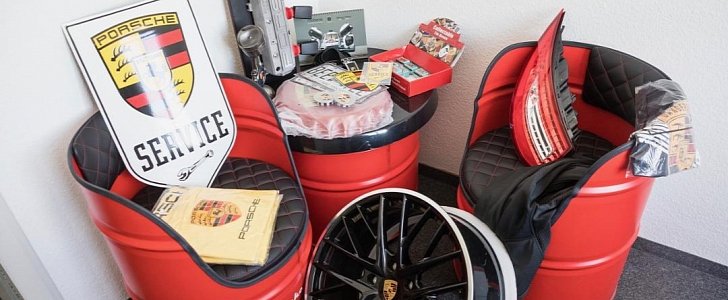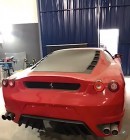People living in rural areas across the world usually engage in agricultural activities. So do the ones in China, but some of them are harvesting Porsche parts instead of growing food.
The Chinese innovative spirit means some of them don't shy away from trying to copy anything they get their hands on, from gadgets to car parts and even complete cars. But whereas a counterfeit device can only cause someone to lose money, a fake car part could endanger lives.
In a statement released on Monday (August 5) and available below, German carmaker Porsche said that in 2018 it confiscated 200,000 fake items relating to its business, worth 60 million EUR ($66.7 million). Of them, 33,000 were spare car parts ranging from wheel center caps to airbags and brake discs.
Three brand protection officers employed by Porsche conduct regular trips to China, where they work together with several detective agencies and three investigator teams. Whenever they come across a counterfeit part, they have the power to seize them.
As per the carmaker, most of the Porsche fake parts (80 percent of the global output) come from China and are often assembled in rural areas, in makeshift workshops or even in the people's living rooms.
But there are also local entities far more organized and "working to the standards of a professional factory," usually in the Shenzhen area.
Porsche says most of these parts, accompanied by promotional items such as baseball caps, T-shirts and sunglasses, find their way to online shops like Amazon, eBay, or Alibaba.
Michaela Stoiber, one of Porsche's brand protection officers, says a little care when choosing what to buy can do wonders when it comes to avoiding fakes.
The easiest way to spot these parts is to pay attention to three key details: price (much lower than for genuine parts), poorly copied brand elements (the team at times found sheep instead of the usual horse shown in the center of the emblem), misspelled words and poor packaging.
In a statement released on Monday (August 5) and available below, German carmaker Porsche said that in 2018 it confiscated 200,000 fake items relating to its business, worth 60 million EUR ($66.7 million). Of them, 33,000 were spare car parts ranging from wheel center caps to airbags and brake discs.
Three brand protection officers employed by Porsche conduct regular trips to China, where they work together with several detective agencies and three investigator teams. Whenever they come across a counterfeit part, they have the power to seize them.
As per the carmaker, most of the Porsche fake parts (80 percent of the global output) come from China and are often assembled in rural areas, in makeshift workshops or even in the people's living rooms.
But there are also local entities far more organized and "working to the standards of a professional factory," usually in the Shenzhen area.
Porsche says most of these parts, accompanied by promotional items such as baseball caps, T-shirts and sunglasses, find their way to online shops like Amazon, eBay, or Alibaba.
Michaela Stoiber, one of Porsche's brand protection officers, says a little care when choosing what to buy can do wonders when it comes to avoiding fakes.
The easiest way to spot these parts is to pay attention to three key details: price (much lower than for genuine parts), poorly copied brand elements (the team at times found sheep instead of the usual horse shown in the center of the emblem), misspelled words and poor packaging.







